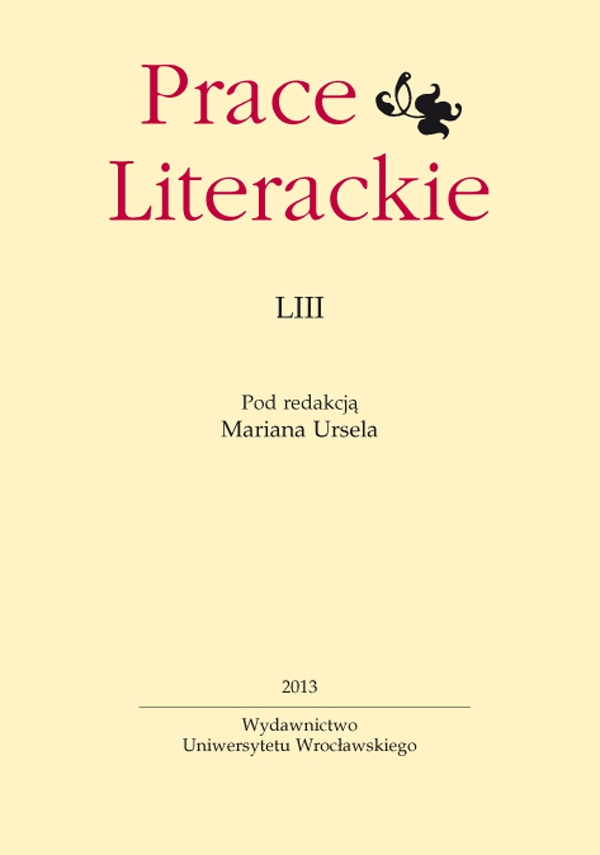

Artykuły

Towards frenetic sensibility. Development of the phenomenon as seen in selected literary examples from the late 18th and early 19th century
The author of the article analyses Romantic frenzy as one of the most prominent literary phenomena of the first half of the 19th century. She presents writers and authors who contributed considerably to the development of the tendency in question. Her overview of the most important figures begins with Marquis de Sade. Debauched cruelty was the first step towards a frenetic view of the world. The marquis pointed to the natural basis for human fondness for the horrible. These remarks left their mark on the works of writers from the late 18th and early 19th century, among whom English Gothic artists stood out. Despite the fact that in H. Walpole’s, A. Radcliffe’s or M. Lewis’ works macabre elements were shown with decidedly varying intensity, there is no denying that their Gothic, atmospheric oeuvre was another important source of inspiration for the frenetic tendency. The first half of the 19th century was marked by the official emergence of the genre frénétique. In order to be able to speak of the heyday of the phenomenon, we need to mention three French writers, who contributed to an increase of interest in the analysed trend. C. Nodier introduced his readers to the horrible elements appearing in dreams, which, in spite of not being true, nevertheless aroused genuine terror. Then V. Hugo in his youthful novel Hans of Iceland created a grotesque world full of disgusting individuals. Next came J. Janin, whose novel was even called an “explosion of freneticism.” In presenting the successive stages of the development of freneticism and pointing to its main initiator, the author underlines the important place of this tendency in the literary space of Romanticism.